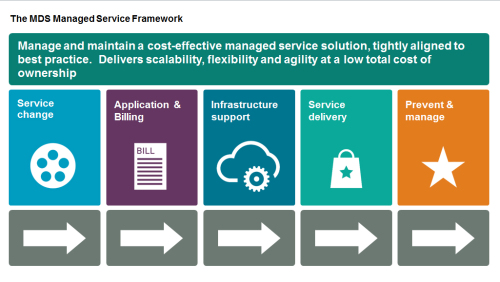Managed Services Mean More Innovation
By: Barry Dowd

Today’s data-centric mobile experience is driving a fundamental shift in the communications industry: away from physical transactions and services towards a new digital era – think mobile broadband access, online banking, downloadable content, and much more. This new and dynamic ecosystem requires service providers to be innovative, flexible and able to scale quickly in order to monetize digital services and defend their market share against disruptive new entrants and over the top (OTT) players. Traditional communications services providers (CSPs) must transform if they are to play a significant part in the digital evolution. The legacy systems that have served them well for many years in traditional service offerings are simply not able to cope with the exponential growth in digital transactions and real-time applications.
Innovation is needed, now!
The transformation to digital service provider (DSP) is accelerating out of necessity. The ability to launch new and innovative content and data propositions quickly and without any system restrictions is a key driver, along with the use of intelligent analytics to support real-time marketing initiatives to cross-sell and upsell. The move from single service to multi-play offerings is gathering speed, and with it the need to find new ways to monetize data services and structure multi-service personalized offerings to boost flagging revenues.
CSPs are concerned about being left behind, but don’t always know what needs to be changed, or how to change it. In the meantime, new players are entering the space as fully-formed DSPs. A soon to be launched MVNO provides a good example of the new digital transformation giving the consumer real-time control and personalisation of their services via their mobile device.
Meeting the digital challenge
In order to physically meet these new demands, CSPs must evolve their IT infrastructure away from heavy, static models towards more agile, standards-based real-time models that are able to handle high volumes of transactions, the majority of which are increasingly taking place online.
However, this is easier said than done. Providing a combination of real-time performance, convergence, scalability and flexibility is not always possible when hindered with existing systems and architecture. It’s a big headache for CSPs looking to launch new services quickly, and there are examples of service providers setting up whole new business divisions because they are embarrassed by how long it takes to get new digital services to market using their existing systems.

Transform traditional BSS through private cloud managed services
From a traditional BSS support scenario, how do CSPs transform to a digital front office with a converged real-time back office? There are three basic options:
1. Try and evolve their existing systems and architecture over time (not always possible and they may miss the boat);
2. Set up a new and “adjunct” system stack (true convergence becomes an issue with existing customers but services can be brought to market quickly; and
3. Look to an established private cloud managed service provider with innovation and assurance at the heart of what they do.
For a large and growing number of CSPs the answer is number 3. A recent survey by Gartner showed that 42% of CIOs felt that external providers were vital to create innovation. This will continue to be a significant option for CSPs in order to stay competitive.



















